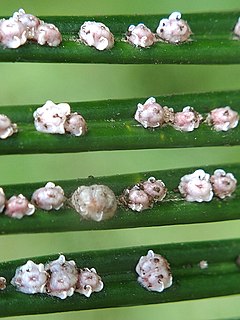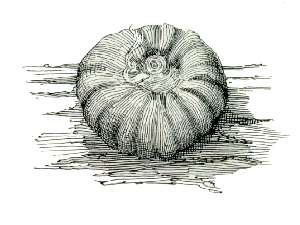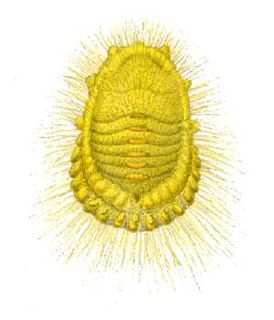
Hemiptera is an order of insects, commonly called true bugs, comprising over 80,000 species within groups such as the cicadas, aphids, planthoppers, leafhoppers, bed bugs, and shield bugs. They range in size from 1 mm (0.04 in) to around 15 cm (6 in), and share a common arrangement of sucking mouthparts. The name "true bugs" is often limited to the suborder Heteroptera. Many insects commonly known as "bugs", especially in American English, belong to other orders; for example, the lovebug is a fly and the May bug and ladybug are beetles.

Scale insects are small insects of the order Hemiptera, suborder Sternorrhyncha. Of dramatically variable appearance and extreme sexual dimorphism, they comprise the infraorder Coccomorpha which is considered a more convenient grouping than the superfamily Coccoidea due to taxonomic uncertainties. Adult females typically have soft bodies and no limbs, and are concealed underneath domed scales, extruding quantities of wax for protection. Some species are hermaphroditic, with a combined ovotestis instead of separate ovaries and testes. Males, in the species where they occur, have legs and sometimes wings, and resemble small flies. Scale insects are herbivores, piercing plant tissues with their mouthparts and remaining in one place, feeding on sap. The excess fluid they imbibe is secreted as honeydew on which sooty mold tends to grow. The insects often have a mutualistic relationship with ants, which feed on the honeydew and protect them from predators. There are about 8,000 described species.
Asterolecanium coffeae or yellow fringed scale is a pit scale insect pest on coffee plants, especially Coffea arabica, throughout tropical Africa, including Angola, the Democratic Republic of Congo, Kenya, Uganda and Tanzania. In addition to coffee plants it feeds on jacaranda and Photinia japonica.
Paratachardina pseudolobata, the lobate lac scale, is a polyphagous and pestiferous lac scale insect, which damages trees and woody shrubs in Cuba, Florida, the Bahamas and the Australian territory of Christmas Island. It was mistakenly identified as Paratachardina lobata (Chamberlin), an insect native to India and Sri Lanka, but was in 2007 recognized and named as a distinct species based on material from Florida; its native distribution is as yet unknown. The new lac insect was described based on all stages of the female, during the revision of the genus Paratachardina, wherein all its known species were redescribed.

Diaspididae is the largest family of scale insects with over 2650 described species in around 400 genera. As with all scale insects, the female produces a waxy protective scale beneath which it feeds on its host plant. Diaspidid scales are far more substantial than those of most other families, incorporating the exuviae from the first two nymphal instars and sometimes faecal matter and fragments of the host plant. These can be complex and extremely waterproof structures rather resembling a suit of armor. For this reason these insects are commonly referred to as armored scale insects. As it is so robust and firmly attached to the host plant, the scale often persists long after the insect has died.

Kerriidae is a family of scale insects, commonly known as lac insects or lac scales. Some members of the genera Metatachardia, Tachardiella, Austrotacharidia, Afrotachardina, Tachardina, and Kerria are raised for commercial purposes, though the most commonly cultivated species is Kerria lacca. These insects secrete a waxy resin that is harvested and converted commercially into lac and shellac, used in various dyes, cosmetics, food glazes, wood finishing varnishes and polishes.
Conchaspis capensis is a species of scale insect from South Africa found on Metalasia muricata and Phylica species. It was originally described by Carl Linnaeus in his 1763 work Centuria Insectorum.
Gordon Floyd Ferris was an American entomologist who served as professor of biology at Stanford University from 1912 to 1958 and earned a reputation for his teaching. He founded and edited the journal Microentomology, preferring to work on insects that could only be examined on microscopic slides. He was a specialist on the systematics of the Coccoidea.

Halimococcidae is a family of scale insects in the order Hemiptera. Members of the family are commonly known as pupillarial palm scales or halimococcids. Most species are found on the leaves of palm trees where they suck sap, but some species occur on Pandanus. The family was named by Brown and McKenzie in 1962 and includes five known genera and twenty one species.

Monophlebidae is a family of scale insects commonly known as the giant scales or monophlebids. They occur in most parts of the world but more genera are found in the tropics than elsewhere.

Aulacaspis yasumatsui, or cycad aulacaspis scale (CAS), is a scale insect species in the genus Aulacaspis that feeds on cycad species such as Cycas revoluta or Dioon purpusii. Other common names include the cycad scale, the sago palm scale, and the Asian cycad scale. This is a serious pest of cycads which can kill its host plant.
Diaspidina is a subtribe of armored scale insects. It occurs mostly in the Americas and Africa, with a few species in tropical Asia. In the Americas Pseudoparlatoria is the largest genus, with Diaspis second; in Africa Diaspis is the largest genus. The grouping identified by Balachowsky in 1954 as the subtribe Diaspidina, are now the tribe Diaspidini.

Callococcus is a genus of Australian scale insect that feeds on species of Leptospermum, Hypocalymma, Kunzea and some other members of the tribes Chamelaucieae and Leptospermeae in the myrtle family Myrtaceae. Callococcus leptospermi induces stem-swelling galls on some species of Leptospermum, and it is considered to be a potential biological control agent of Leptospermum laevigatum in South Africa. The other described species of Callococcus do not induce galls.
John Stuart Noyes is a Welsh entomologist.
Arthrostylidium banaoense is a species of Neotropical bamboo native to Central America, the West Indies, northern South America, and southern Mexico.
Aonidomytilus crookiae is a species of scale insect in the family Diaspididae which are often referred to as "armored scale insects." It is commonly known as "St. John's Wort Scale." Originally named Nelaspis crookiae by Gordon Floyd Ferris in 1954, the taxon was moved to the genus Aonidomytilus in 1984 as the result of a 1979 taxonomic revision of the genus. Aonidomytilus multiglandulatus is a junior synonym.
Hemiberlesia lataniae, the latania or palm scale, is a species of armored scale insect in the family Diaspididae. It was first described by the French entomologist Victor Antoine Signoret in 1869 using Latania lontaroides, a species of palm tree endemic to Réunion as its host; since then, it has been found on avocado trees growing in South Africa, Australia, Israel, the United States, and on a range of other plants in many parts of the world.
Chrysomphalus is a genus of scales and mealybugs in the family Diaspididae. There are about 16 described species in Chrysomphalus.
Trabutina mannipara, or mana scale, is a species of mealybug found in the Middle East and southern Europe. It is the most well-known of the five species in the genus Trabutina, of which it is the type species, due to its association with the biblical story of manna. T. mannipara feeds parasitically on tamarisk trees, and excretes a sweet substance which is sometimes collected for human consumption. Obsolete terms for it include Coccus manniparus and Trabutina palestina. This species can be found in the Sinai and Iraq.
Selenaspidus articulatus is an armoured scale insect in the family Diaspididae, commonly known as the West Indian red scale. It is a polyphagous species found in tropical and subtropical regions around the world as a pest species of Citrus and other fruit and ornamental trees.







